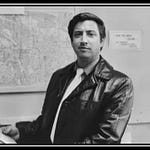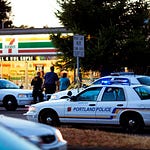Read the Abstract of this great 2015 study on the benefits of Grounding. There is an active link to the full paper, along with all the sources, listed on the References page, which can be accessed below. The full study can be read here…
~Theresa Griffin Kennedy
The effects of grounding (earthing) on inflammation, the immune response, wound healing, and prevention and treatment of chronic inflammatory and autoimmune diseases
James L Oschman,1 Gaétan Chevalier,2 and Richard Brown3
Author information Copyright and License information PMC Disclaimer
Abstract
“Multi-disciplinary research has revealed that electrically conductive contact of the human body with the surface of the Earth (grounding or earthing) produces intriguing effects on physiology and health. Such effects relate to inflammation, immune responses, wound healing, and prevention and treatment of chronic inflammatory and autoimmune diseases. The purpose of this report is two-fold: to 1) inform researchers about what appears to be a new perspective to the study of inflammation, and 2) alert researchers that the length of time and degree (resistance to ground) of grounding of experimental animals is an important but usually overlooked factor that can influence outcomes of studies of inflammation, wound healing, and tumorigenesis. Specifically, grounding an organism produces measurable differences in the concentrations of white blood cells, cytokines, and other molecules involved in the inflammatory response. We present several hypotheses to explain observed effects, based on current research results and our understanding of the electronic aspects of cell and tissue physiology, cell biology, biophysics, and biochemistry. An experimental injury to muscles, known as delayed onset muscle soreness, has been used to monitor the immune response under grounded versus ungrounded conditions. Grounding reduces pain and alters the numbers of circulating neutrophils and lymphocytes, and also affects various circulating chemical factors related to inflammation.
Keywords: chronic inflammation, immune system, wound repair, white blood cells, macrophages, autoimmune disorders.
References
1. Ober CA, Sinatra ST, Zucker M. Earthing: The Most Important Health Discovery Ever? 2nd. Laguna Beach: Basic Health Publications; 2014. [Google Scholar]
2. Amalu W. Medical thermography case studies. Clinical earthing application in 20 case studies [undated article on the Internet] [Accessed July 5, 2008]. Available from: http://74.63.154.231/here/wp-content/uploads/2013/06/Amalu_thermographic_case_studies_2004.pdf.
3. Oschman JL. Can Electrons act as antioxidants? A review and commentary. J Altern Complement Med. 2007;13:955–967. [PubMed] [Google Scholar]
4. Chevalier G, Sinatra ST, Oschman JL, Sokal K, Sokal P. Review article: Earthing: health implications of reconnecting the human body to the Earth’s surface electrons. J Environ Public Health. 2012;2012:291541. [PMC free article] [PubMed] [Google Scholar]
5. Ghaly M, Teplitz D. The biologic effects of grounding the human body during sleep as measured by cortisol levels and subjective reporting of sleep, pain, and stress. J Altern Complement Med. 2004;10(5):767–776. [PubMed] [Google Scholar]
6. Cohen S, Janicki-Deverts D, Doyle WJ, et al. Chronic stress, glucocorticoid receptor resistance, inflammation, and disease risk. Proc Natl Acad Sci U S A. 2012;109(16):5995–5999. [PMC free article] [PubMed] [Google Scholar]
7. Brown D, Chevalier G, Hill M. Pilot study on the effect of grounding on delayed-onset muscle soreness. J Altern Complement Med. 2010;16(3):265–273. [PMC free article] [PubMed] [Google Scholar]
8. Butterfield TA, Best TM, Merrick MA. The dual roles of neutrophils and macrophages in inflammation: a critical balance between tissue damage and repair. J Athl Train. 2006;41(4):457–465. [PMC free article] [PubMed] [Google Scholar]
9. Takmakidis SP, Kokkinidis EA, Similios I, Douda H. The effects of ibuprofen on delayed onset muscle soreness and muscular performance after eccentric exercise. J Strength Cond Res. 2003;17(1):53–59. [PubMed] [Google Scholar]
10. Close GL, Ashton T, Cable T, Doran D, MacLaren DP. Eccentric exercise, isokinetic muscle torque and delayed onset muscle soreness: the role of reactive oxygen species. Eur J Appl Physiol. 2004;91(5–6):615–621. [PubMed] [Google Scholar]
11. MacIntyre DL, Reid WD, Lyster DM, Szasz IJ, McKenzie DC. Presence of WBC, decreased strength, and delayed soreness in muscle after eccentric exercise. J Appl Physiol (1985) 1996;80(3):1006–1013. [PubMed] [Google Scholar]
12. Franklin ME, Currier D, Franklin RC. The effect of one session of muscle soreness inducing weight lifting exercise on WBC count, serum creatine kinase, and plasma volume. J Orthop Sports Phys Ther. 1991;13(6):316–321. [PubMed] [Google Scholar]
13. Peake J, Nosaka K, Suzuki K. Characterization of inflammatory responses to eccentric exercise in humans. Exerc Immunol Rev. 2005;11:64–85. [PubMed] [Google Scholar]
14. MacIntyre DL, Reid WD, McKenzie DC. Delayed muscle soreness: the inflammatory response to muscle injury and its clinical implications. Sports Med. 1995;20(1):24–40. [PubMed] [Google Scholar]
15. Smith LL, Bond JA, Holbert D, et al. Differential white cell count after two bouts of downhill running. Int J Sports Med. 1998;19(6):432–437. [PubMed] [Google Scholar]
16. Smith LL.Cytokine hypothesis of overtraining: a physiological adaptation to excessive stress? Med Sci Sports Exerc 2000322317–331. [PubMed] [Google Scholar]
17. Ascensão A, Rebello A, Oliveira E, Marques F, Pereira L, Magalhães J. Biochemical impact of a soccer match: analysis of oxidative stress and muscle damage throughout recovery. Clin Biochem. 2008;41(10–11):841–851. [PubMed] [Google Scholar]
18. Smith LL, McCammon M, Smith S, Chamness M, Israel RG, O’Brien KF. White blood cell response to uphill walking and downhill jogging at similar metabolic loads. Eur J Appl Physiol. 1989;58(8):833–837. [PubMed] [Google Scholar]
19. Broadbent S, Rousseau JJ, Thorp RM, Choate SL, Jackson FS, Rowlands DS. Vibration therapy reduces plasma IL6 and muscle soreness after downhill running. Br J Sports Med. 2010;44(12):888–894. [PubMed] [Google Scholar]
20. Gleeson M, Almey J, Brooks S, Cave R, Lewis A, Griffiths H. Haematological and acute-phase responses associated with delayed-onset muscle soreness. Eur J Appl Physiol Occup Physiol. 1995;71(2–3):137–142. [PubMed] [Google Scholar]
21. Tidball JG. Inflammatory processes in muscle injury and repair. Am J Physiol Regul Integr Comp Physiol. 2005;288(2):R345–R353. [PubMed] [Google Scholar]
22. Zhang J, Clement D, Taunton J. The efficacy of Farabloc, an electromagnetic shield, in attenuating delayed-onset muscle soreness. Clin J Sport Med. 2000;10(1):15–21. [PubMed] [Google Scholar]
23. Oschman JL. Charge transfer in the living matrix. J Bodyw Mov Ther. 2009;13(3):215–228. [PubMed] [Google Scholar]
24. Best TM, Hunter KD. Muscle injury and repair. Phys Med Rehabil Clin North Am. 2000;11(2):251–266. [PubMed] [Google Scholar]
25. Selye H. The Stress of Life. Revised. New York: McGraw-Hill Companies, Inc.; 1984. [Google Scholar]
26. Motoyama H. Measurements of Ki energy: Diagnoses and Treatments. Tokyo: Human Science Press; 1997. [Google Scholar]
27. Colbert AP, Yun J, Larsen A, Edinger T, Gregory WL, Thong T. Skin impedance measurements for acupuncture research: development of a continuous recording system. Evid Based Complement Altern Med. 2008;5(4):443–450. [PMC free article] [PubMed] [Google Scholar]
28. Reichmanis M, Marino AA, Becker RO. Electrical correlates of acupuncture points. IEEETrans Biomed Eng. 1975;22(6):533–535. [PubMed] [Google Scholar]
29. Sokal K, Sokal P. Earthing the human organism influences bioelectrical processes. J Altern Complement Med. 2012;18(3):229–234. [PubMed] [Google Scholar]
30. Selye H. On the mechanism through which hydrocortisone affects the resistance of tissues to injury; an experimental study with the granuloma pouch technique. JAMA. 1953;152(13):1207–1213. [PubMed] [Google Scholar]
31. Oschman JL, Oschman NH. Matter, energy, and the living matrix. Rolf Lines. 1993;21(3):55–64. [Google Scholar]
32. Pischinger A. The Extracellular Matrix and Ground Regulation: Basis for a Holistic Biological Medicine. Berkeley: North Atlantic Books; 2007. [Google Scholar]
33. Heine H. Lehrbuch der biologischen Medizin. Grundregulation und Extrazellulare Matrix. [Handbook of Biological Medicine. The extracellular matrix and ground regulation] Stuttgart: Hippokrates Verlag; 2007. German. [Google Scholar]
34. Pienta KJ, Coffey DS. Cellular harmonic information transfer through a tissue tensegrity-matrix system. Med Hypotheses. 1991;34(1):88–95. [PubMed] [Google Scholar]
35. Szent-Györgyi A. Towards a new biochemistry? Science. 1941;93:609–611. [PubMed] [Google Scholar]
36. Szent-Györgyi A. The study of energy levels in biochemistry. Nature. 1941;148(3745):157–159. [Google Scholar]
37. Tokita Y. Proteins as semiconductor devices [article on the Internet] Available from: http://www.jsst.jp/e/JSST2012/extended_abstract/pdf/16.pdf. Accessed May 23, 2014.
38. Sarpeshkar R. Ultra Low Power Bioelectronics. Fundamentals, Biomedical Applications, and Bio-inspired Systems. Cambridge: Cambridge University Press; 2010. [Google Scholar]
39. Hush NS. An overview of the first half-century of molecular electronics. Ann N Y Acad Sci. 2003;1006:1–20. [PubMed] [Google Scholar]
40. Mentovich E, Belgorodsky B, Gozin M, Richter S, Cohen H. Doped biomolecules in miniaturized electric junctions. J Am Chem Soc. 2012;134(20):8468–8473. [PubMed] [Google Scholar]
41. Cuevas JC, Scheer E. Molecular Electronics: An Introduction to Theory and Experiment. Vol. 1. World Scientific Publishing Co; Singapore: 2010. (Singapore; World Scientific Series in Nanoscience and Nanotechnology). [Google Scholar]
42. Reimers JR, United Engineering Foundation (US) et al. Molecular electronics III. Vol. 1006. New York, NY: Annals of the New York Academy of Sciences; 2003. [PubMed] [Google Scholar]
43. Joachim C, Ratner MA. Molecular electronics: Some views on transport junctions and beyond. Proc Natl Acad Sci USA. 2005;102(25):8801–8808. [PMC free article] [PubMed] [Google Scholar]
44. Heine H. Homotoxicology and Ground Regulation System (GRS) Baden-Baden: Aurelia-Verlag; 2000. [Google Scholar]
45. Chevalier G. Changes in pulse rate, respiratory rate, blood oxygenation, perfusion index, skin conductance, and their variability induced during and after grounding human subjects for 40 minutes. J Altern Complement Med. 2010;16(1):81–87. [PubMed] [Google Scholar]
46. Miwa S, Beckman KB, Muller FL, editors. Oxidative Stress in Aging: From Model Systems to Human Diseases. Totowa: Humana Press; 2008. [Google Scholar]
47. Oschman JL. Mitochondria and cellular aging. In: Klatz R, Goldman R, editors. Anti-Aging Therapeutics. XI. Chicago: American Academy of Anti-Aging Medicine; 2008. 2009. pp. 275–287. [Google Scholar]
48. Kessler WD, Oschman JL. Counteracting aging with basic physics. In: Klatz R, Goldman R, editors. Anti-Aging Therapeutics. XI. Chicago: American Academy of Anti-Aging Medicine; 2009. pp. 185–194. [Google Scholar]
49. Stocker R. Antioxidant activities of bile pigments. Antioxid Redox Signal. 2004;6(5):841–849. [PubMed] [Google Scholar]
50. Paschalis V, Nikolaidis MG, Fatouros IG, et al. Uniform and prolonged changes in blood oxidative stress after muscle-damaging exercise. In Vivo. 2007;21(5):877–883. [PubMed] [Google Scholar]
51. Nikolaidis MG, Paschalis V, Giakas G, et al. Decreased blood oxidative stress after repeated muscle damaging exercise. Med Sci Sports Exerc. 2007;39(7):1080–1089. [PubMed] [Google Scholar]
52. Florczyk UM, Jozkowicz A, Dulak J. Biliverdin reductase: new features of an old enzyme and its potential therapeutic significance. Pharmacol Rep. 2008;60(1):38–48. [PMC free article] [PubMed] [Google Scholar]
53. Sedlak TW, Salehb M, Higginson DS, Paul BD, Juluri KR, Snyder SH. Bilirubin and glutathione have complementary antioxidant and cytoprotective roles. Proc Natl Acad Sci U S A. 2009;106(13):5171–5176. [PMC free article] [PubMed] [Google Scholar]
54. Close GL, Ashton T, McArdle A, MacLaren DP. The emerging role of free radicals in delayed onset muscle soreness and contraction-induced muscle injury. Comp Biochem Physiol A Mol Integr Physiol. 2005;142(3):257–266. [PubMed] [Google Scholar]
55. Hirose L, Nosaka K, Newton M, et al. Changes in inflammatory mediators following eccentric exercise of the elbow flexors. Exerc Immunol Rev. 2004;10:75–90. [PubMed] [Google Scholar]
56. Hartmann U, Mester J. Training and overtraining markers in selected sport events. Med Sci Sports Exerc. 2000;32(1):209–215. [PubMed] [Google Scholar]
57. McCully KK, Argov Z, Boden BP, Brown RL, Bank WJ, Chance B. Detection of muscle injury in humans with 31-P magnetic resonance spectroscopy. Muscle Nerve. 1988;11(3):212–216. [PubMed] [Google Scholar]
58. McCully KK, Posner J. Measuring exercise-induced adaptations and injury with magnetic resonance spectroscopy. Int J Sports Med. 1992;13(S1):S147–S149. [PubMed] [Google Scholar]
59. McCully KK, Shellock FG, Bank WJ, Posner JD. The use of nuclear magnetic resonance to evaluate muscle injury. Med Sci Sports Exerc. 1992;24(5):537–542. [PubMed] [Google Scholar]
60. Zehnder M, Muelli M, Buchli R, Kuehne G, Boutellier U. Further glycogen decrease during early recovery after eccentric exercise despite a high carbohydrate intake. Eur J Nutr. 2004;43(3):148–159. [PubMed] [Google Scholar]
61. Swartz K. Health Care Cost Monitor. The Hastings Center; 2011. [Accessed January 18, 2011]. Projected Costs of Chronic Diseases. Available from: http://healthcare-costmonitor.thehastingscenter.org/kimberlySwartz/projected-costs-of-chronic-diseases/ [Google Scholar]
62. Partnership to Fight Chronic Disease. [Accessed January 18, 2011]. Available from: http://www.fightchronicdisease.org/issues/about.cfm.
63. Mac Kenzie WF, Garner FM. Comparison of neoplasms in six sources of rats. J Natl Cancer Inst. 1973;50(5):1243–1257. [PubMed] [Google Scholar]
64. Oschman JL. In: Mitochondria and cellular aging. Anti-Aging Therapeutics Volume XI. Klatz R, Goldman R, editors. Chicago IL: American Academy of Anti-Aging Medicine; 2008. pp. 285–287. [Google Scholar]
65. Biagi E, Candela M, Fairweather-Tait S, Franceschi C, Brigidi P. Aging of the human metaorganism: the microbial counterpart. Age (Dordr) 2012;34(1):247–267. [PMC free article] [PubMed] [Google Scholar]
66. Franceschi C, Bonafè M, Valensin S, et al. Inflamm-aging. An evolutionary perspective on immunosenescence. Ann N Y Acad Sci. 2000;908:244–254. [PubMed] [Google Scholar]
67. Lee RP. Interface. Mechanisms of Spirit in Osteopathy. Portland, OR: Stillness Press; 2005. [Google Scholar]”
~Theresa Griffin Kennedy














Share this post